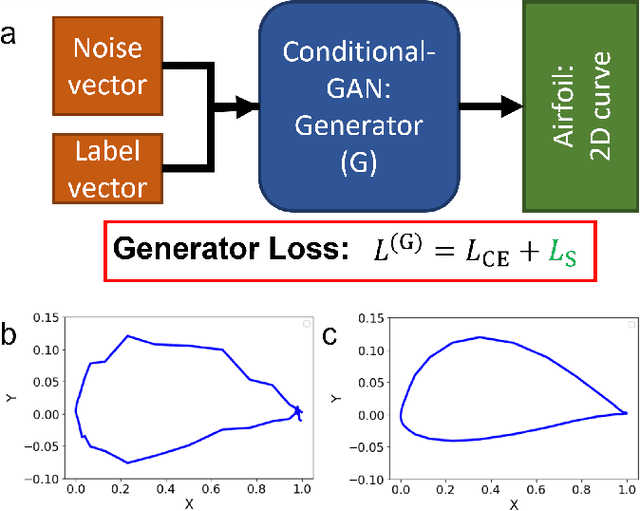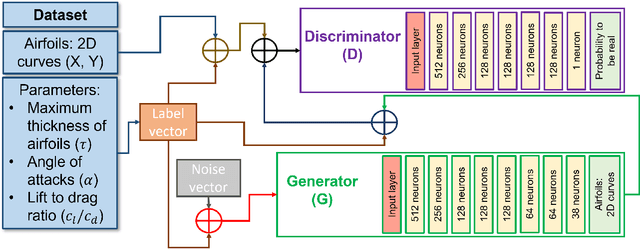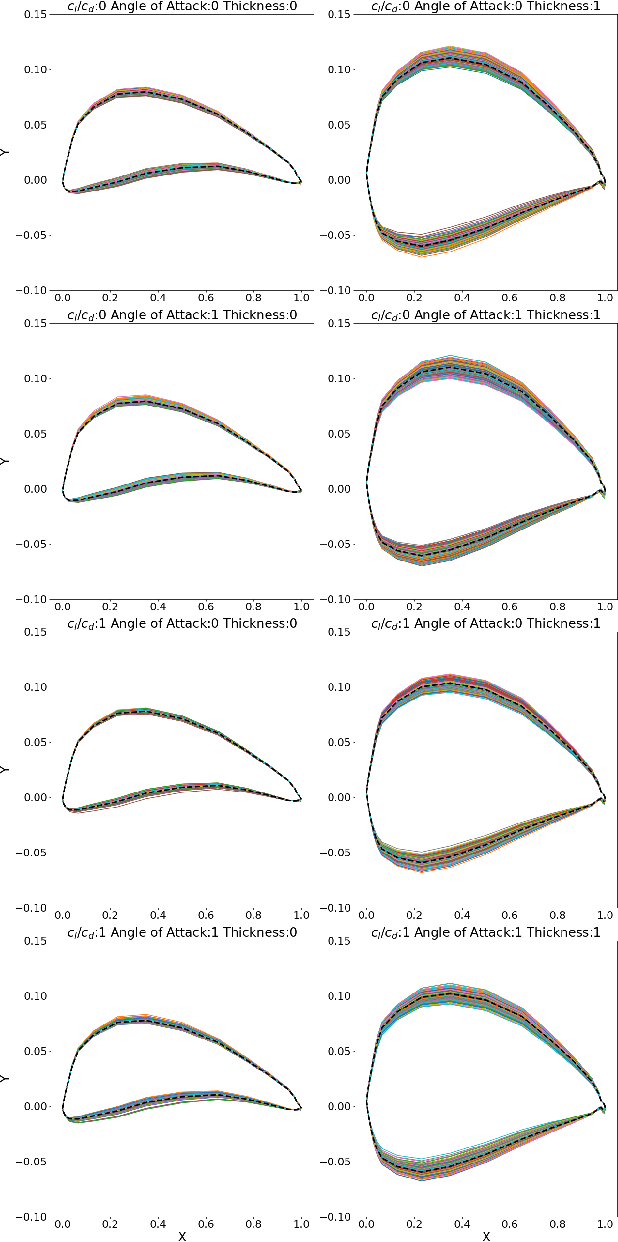Joyjit Chattoraj
Tailoring Generative Adversarial Networks for Smooth Airfoil Design
Apr 18, 2024



Abstract:In the realm of aerospace design, achieving smooth curves is paramount, particularly when crafting objects such as airfoils. Generative Adversarial Network (GAN), a widely employed generative AI technique, has proven instrumental in synthesizing airfoil designs. However, a common limitation of GAN is the inherent lack of smoothness in the generated airfoil surfaces. To address this issue, we present a GAN model featuring a customized loss function built to produce seamlessly contoured airfoil designs. Additionally, our model demonstrates a substantial increase in design diversity compared to a conventional GAN augmented with a post-processing smoothing filter.
Graph Neural Network Based Surrogate Model of Physics Simulations for Geometry Design
Feb 01, 2023



Abstract:Computational Intelligence (CI) techniques have shown great potential as a surrogate model of expensive physics simulation, with demonstrated ability to make fast predictions, albeit at the expense of accuracy in some cases. For many scientific and engineering problems involving geometrical design, it is desirable for the surrogate models to precisely describe the change in geometry and predict the consequences. In that context, we develop graph neural networks (GNNs) as fast surrogate models for physics simulation, which allow us to directly train the models on 2/3D geometry designs that are represented by an unstructured mesh or point cloud, without the need for any explicit or hand-crafted parameterization. We utilize an encoder-processor-decoder-type architecture which can flexibly make prediction at both node level and graph level. The performance of our proposed GNN-based surrogate model is demonstrated on 2 example applications: feature designs in the domain of additive engineering and airfoil design in the domain of aerodynamics. The models show good accuracy in their predictions on a separate set of test geometries after training, with almost instant prediction speeds, as compared to O(hour) for the high-fidelity simulations required otherwise.
 Add to Chrome
Add to Chrome Add to Firefox
Add to Firefox Add to Edge
Add to Edge